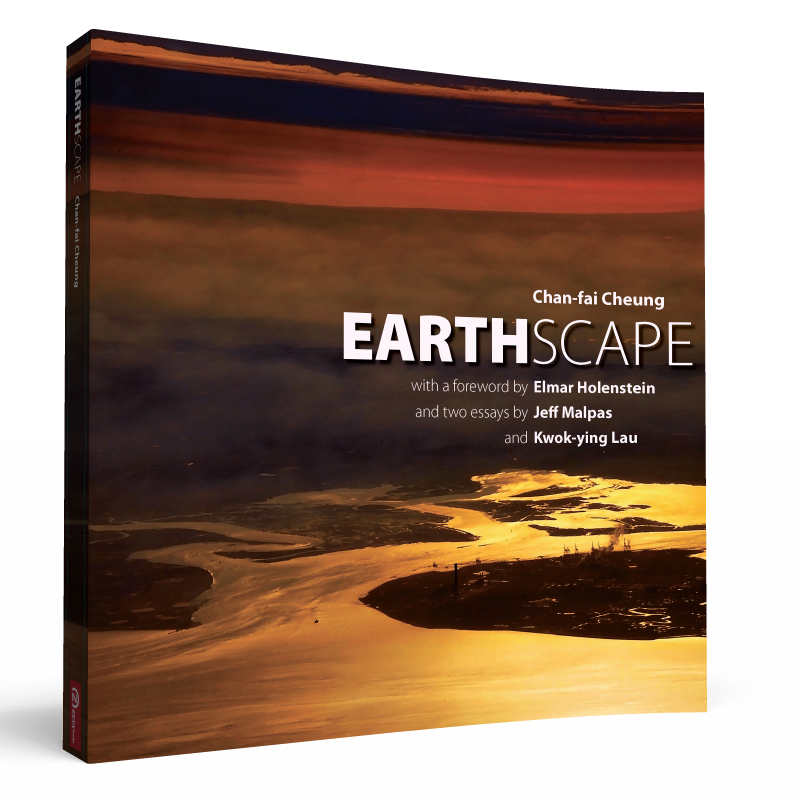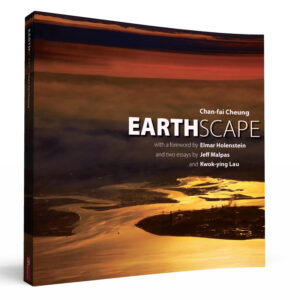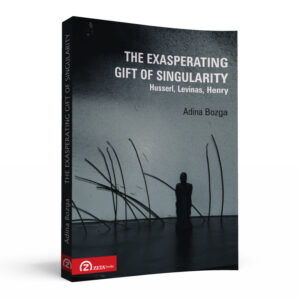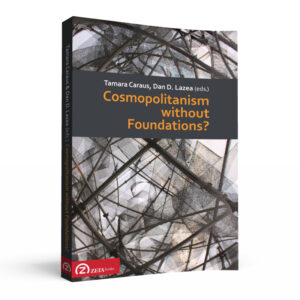PRESENTATION
Chan-fai Cheung has a passion for photography. His camera is always with him, even when he is taking a flight. He enjoys seeing the earth from the cruising height of commercial flight, and always tries to take photos of the earth 35,000 feet above. But he is not just interested in the scenery below. As a phenomenologist, he attempts to see phenomenologically how the earth below appears in terms of form and bounded space. That’s why he names his second volume on phenomenology and photography Earthscape, a term he has borrowed from Edward Casey. In the framed space of the phenomenologist-photographer’s camera, the natural topography and geography are transformed into layers of patterns and lines, contrasts of colours and light—photographic images no longer the everyday views of mountain, sea or river. The book also features phenomenological reflection on earthscape photography by Elmar Holenstein, Jeff Malpas, and Kwok-ying Lau.
TESTIMONIA
“Landscape painters and earthscape photographers depict more than the objective, physical aspects of an area. They succeed to convey to us an area’s subjectively experienced effects…. Chan-fai, we can appreciate soon, is not an ordinary phenomenologically trained photographer. … [I]t is only a few decades since we are capable of seeing the earth ten kilometers from above out of the windows of an airplane. For the first time in the long history of humanity gifted artists can lay out the structures of the earth for us from such a height…. Until recently artistic earthscape pictures from such heights were mainly the work of European and American photographers. The time has come for Chinese photographers grown up in their qi-sensitive tradition of landscape painting to join them. Chan-fai has seized this kairos.” (Elmar Holenstein).
“The range of images that appear in this book is quite astounding, and their diversity is matched by their often breathtaking beauty. Some images have a quality akin to works of abstract painting… others have the delicacy and ambiguity of Chinese landscape paintings… yet others look like the work of an obsessive realist eager to cram as much detail as possible onto the canvas so that the reality of the image, like the visions that appear in surrealist painting, becomes a source of seeming unreality…. [T]hese are not mere recording of views, but precisely as views—as bounded views—they also enable a particular manner of appearing of that which is represented. In this respect, the act of photography, like any act of representation, and precisely in virtue of its character as representation, always operates to reveal aspects of the world that might otherwise go unremarked or un-noticed.” (Jeff Malpas)
Chan-fai Cheung received his Dr. phil. degree from Freiburg University, Germany. His major research interests include phenomenology (especially the philosophy of Husserl and Heidegger); philosophy of love, death, and happiness; Utopian thought; and general and liberal education. He has recently retired from active administration and teaching duties at the Chinese University of Hong Kong, where he served for over twenty years. He was Director of University General Education, and Professor and Chairman of the Department of Philosophy. He has published broadly on phenomenology, love and death, and general education. Besides academic interests, he also has artistic passions for photography and Chinese seal-engraving. He has held over ten one-man photography exhibitions, mainly in Hong Kong but also in Hawaii.
ISBN: 978-988-18777-2-7 (paperback)
ISBN: 978-606-8266-51-0 (ebook)






